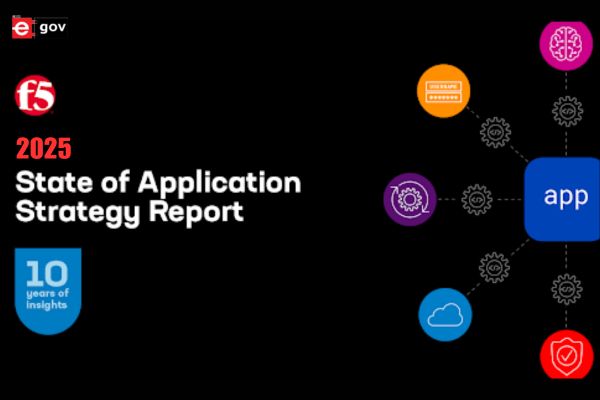F5 2025 State of Application Strategy Report Reveals Talk Becomes Action as AI Gets to Work
F5 Report Highlights AI-Driven Transformation Amid Operational Complexity

IT leaders are increasingly trusting Artificial Intelligence (AI) with business-critical tasks from traffic management to cost optimisation. This is according to F5’s 2025 State of Application Strategy Report, the industry’s most comprehensive report on application strategy. The report surveyed global IT decision-makers and found that 96% of organisations are now deploying AI models, up from a quarter in 2023.
There is also a growing willingness to elevate AI to the heart of business operations. Almost three-quarters of respondents (72%) said they want to use AI to optimise app performance, whereas 59% support the use of AI for both cost-optimisation and to inject security rules, automatically mitigating zero-day vulnerabilities.
Today, half of organisations are using AI gateways to connect applications to AI tools, and another 40% expect to be doing so in the next 12 months. Most are using this technology to protect and manage AI models (62%), provide a central point of control (55%), and to protect their company from sensitive data leaks (55%).
“This year’s 2025 State of Application Strategy Report shows that IT decision-makers are becoming confident about embedding AI into ops,” said Lori MacVittie, F5 Distinguished Engineer. “We are fast moving to a point where AI will be trusted to operate autonomously at the heart of an organisation, generating and deploying code that helps to cut costs, boost efficiency, and mitigate security problems. That is what we mean when we talk about AIOps, and it is now becoming a reality.”
Operational Readiness and API Challenges Remain
Despite growing AI confidence, the SOAS Report highlights several enduring challenges. For organisations currently deploying AI models, the number one concern is AI model security.
While AI tools are more autonomous than ever, operational readiness gaps still exist. 60% of organisations feel bogged down by manual workflows, and 54% claim skill shortages are barriers to AI development.
Furthermore, almost half (48%) identified the cost of building and operating AI workloads as a problem, up from 42% last year.
A greater proportion of organisations also said that they have not established a scalable data practice (39% vs. 33% in 2024) and that they do not trust AI outputs due to potential bias or hallucinations (34% vs. 27%). However, fewer complained about the quality of their data (48%, down from 56% last year).
APIs were another concern. 58% reported they have become a pain point, and some organisations spend as much as half of their time managing complex configurations involving numerous APIs and languages. Working with vendor APIs (31%), custom scripting (29%), and integrating with ticketing and management systems (23%) were flagged as the most time-consuming automation-related tasks.
“Organisations need to focus on the simplification and standardisation of operations, including streamlining APIs, technologies, and tasks,” said MacVittie. “They should also recognise that AI systems are themselves well-suited to handle complexity autonomously by generating and deploying policies or solving workflow issues. Operational simplicity is not just something on which AI is going to rely, but which it will itself help to deliver.”

Hybrid App Deployments Prevail
Allied to soaring AI appetites is a greater reliance on hybrid cloud architectures.
According to the 2025 State of Application Strategy Report, 94% of organisations are deploying applications across multiple environments—including public clouds, private clouds, on-premises data centers, edge computing, and colocation facilities—to meet varied scalability, cost, and compliance requirements.
Consequently, most decision-makers see hybrid environments as critical to their operational flexibility. 91% cited adaptability to fluctuating business needs as the top benefit of adopting multiple clouds, followed by improved app resiliency (68%) and cost efficiencies (59%).
A hybrid approach is also reflected in deployment strategies for AI workloads, with 51% planning to use models across both cloud and on-premises environments for the foreseeable future.
Significantly, the 2025 State of Application Strategy Report found that 79% of organisations recently repatriated at least one application from the public cloud back to an on-premises or colocation environment, citing cost control, security concerns, and predictability. This marks a dramatic rise from 13% just four years ago, further underscoring the importance of preserving flexibility beyond public cloud reliance.
Still, the hybrid model can prove a headache for some. Inconsistent delivery policies (reported by 53% of respondents) and fragmented security strategies (47%) are all top of mind in this respect.
“While spreading applications across different environments and cloud providers can bring challenges, the benefits of being cloud-agnostic are too great to ignore. It has never been clearer that the hybrid approach to app deployment is here to stay,” said Cindy Borovick, Director of Market and Competitive Intelligence at F5.
Key Highlights from the 2025 State of Application Strategy Report
- AI Gateways on the Rise. Nearly half of APCJ organisations (49%) are already using AI gateways to connect applications to AI tools, with another 46% planning to do so in the next 12 months.
- Top Use Cases for AI Gateways. Among those leveraging AI gateways, the most common applications include protecting and managing AI models (66%), preventing sensitive data leaks (61%), and observing AI traffic and application demand (61%).
- Data and Trust Challenges. Over half (53%) struggle with immature data quality, and 45% are deterred by the high costs of building and running AI workloads.
- Hybrid Complexity. The hybrid model of AI deployment introduces hurdles, with 79% citing inconsistent security policies, 59% highlighting delivery inconsistencies, and 16% dealing with operational difficulties.
Toward a Programmable, AI-Driven Future
Looking ahead, the 2025 State of Application Strategy Report suggests that organizations aiming to unlock AI’s full potential should focus on creating programmable IT environments that standardise and automate app delivery and security policies.
By 2026, AI is expected to move from isolated tasks to orchestrating end-to-end processes, marking a shift toward complete automation within IT operations environments. Platforms equipped with natural language interfaces and programmable capabilities will increasingly eliminate the need for traditional management consoles, streamlining IT workflows with unprecedented precision.
“Flexibility and automation are no longer optional—they are critical for navigating complexity and driving transformation at scale,” Borovick emphasised. “Organisations that establish programmable foundations will not only enhance AI’s potential but create IT strategies capable of scaling, adapting, and delivering exceptional customer experiences in the modern age.”




